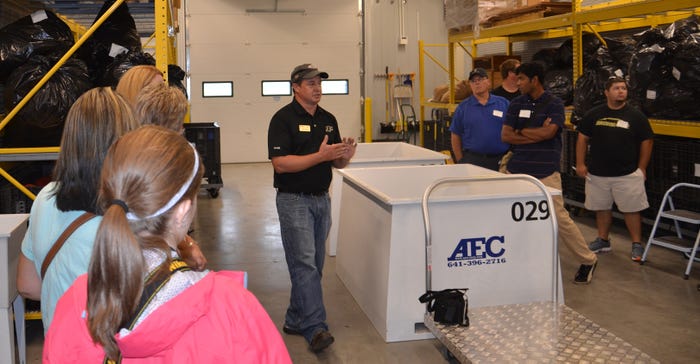
The last time Indiana Prairie Farmer highlighted Purdue University’s field phenotyping center located at the Agronomy Center for Research and Education was on the October 2016 cover. Everything was brand-new, and only a few of the innovative machines had been used. Nearly 18 months later, work is in full swing at the facility.
Officially known as the Indiana Corn and Soybean Innovation Center, the facility is one major part of the Purdue Moves initiative commissioned by Purdue President Mitch Daniels. Other groups contributed significant funding, including the Indiana Corn Marketing Council and the Indiana Soybean Alliance.
Work underway
Here is a look at some of the work that has happened at the center so far. Jason Adams, manager of the facility, offers insights into how the facility has come to life in 18 months.
• Threshing room. One of the unique parts of the facility is that plant breeders now have a state-of-the-art place to harvest their small-plot crops. They feed the crop into the thresher, the seed comes out in one spot, and the plant material is carried outside. There is very little dust in the facility, Adams says.
While much of the work is devoted to corn and soybeans, researchers working on wheat and sorghum also use the threshing room. The multiple workstations have allowed several people to work in the facility at once, which was the intended goal, Adams says.
• Sorting technology. Researchers and plant breeders who use the phenotyping center have access to state-of-the-art sorting technology. Once they have threshed a sample, they can run it through the sorter, Adams says. It separates by shapes. Images of seeds even appear on a computer monitor connected to the machine.
• Storage and work areas. Areas of the building that were once empty are now occupied. Seed and plant samples are categorized by technicians and stored in the appropriate area. A large amount of workspace for various activities was included in the design. The designers also incorporated ample areas for storing various types of plant material, Adams says.
• Data analysis. The end goal of the phenotyping center is to collect tons of information on plants all season long. Part of this data is sent to various locations on campus. However, there is a “data command” center located within the phenotyping building. Computers capable of doing various kinds of analysis on data are housed in this location. The facility was designed so students and researchers from various disciplines could not only analyze data, but also interact with each other and share ideas at the facility. That process is well underway, Adams says.
• UAVs and crop sensors. The bay in the building designed for use by pilots and people working with unmanned aerial vehicles has received a workout so far, Adams says. Both multi-rotor and fixed-wing UAVs are used to collect data. Some of them are customized on-site to help accomplish specific tasks. A high-clearance vehicle with various sensors has also been used to collect plant information.
To see photos of the facility in use, click through the slideshow below.
About the Author(s)
You May Also Like




